In recent years, the healthcare field has made huge strides in technology. This has changed how patients are cared for. Hospital technology plays a key role in boosting patient care and safety. It includes tools like electronic health records (EHRs) and telemedicine, as well as advanced medical imaging and robotic surgery. These healthcare innovations can really help improve patient outcomes and healthcare efficiency.
The use of hospital technology does face some challenges, though. If not designed well or put into practice correctly, it might add stress for healthcare workers. This could result in more medical errors. To tackle these issues, government groups like the Agency for Healthcare Research and Quality (AHRQ) and the Centers for Medicare and Medicaid Services (CMS) offer help. They provide support for using new technologies, like the Safety Assurance Factors for EHR Resilience (SAFER) guides. The goal is to make sure that the latest healthcare solutions improve patient safety and workflows.
Key Takeaways
- Healthcare advancements, including electronic health records (EHRs) and telemedicine, offer big benefits to patients.
- Hospital technology aims to streamline clinical processes, but if not planned well, it could overburden staff.
- Experts at AHRQ and CMS provide tools to help healthcare groups effectively use hospital technology, like the SAFER guides.
- The key to successful healthcare innovations is focusing on patient safety, streamlining workflows, and design made for users.
- The push for better hospital technology and digital healthcare continues to aim for higher patient outcomes and healthcare efficiency.
Introduction
Over the past few decades, we’ve seen amazing advances in technology. These advances have made it possible to make patient care safer. Because of these tech tools, it’s easier to keep records straight and cut down on mistakes. This is great news for everyone involved in healthcare. But, there’s a catch.
If the tech isn’t set up correctly, it can actually make things worse. Doctors and nurses might get overwhelmed with alerts and messages. When this happens, they might miss important info. This can lead to more mistakes.
Technological Advances and Patient Safety
Technology has changed the game in healthcare. It’s made patient care safer than ever before. By going digital, we’ve made healthcare more organized and efficient. This has cut down on mistakes and saved money. Yet, not all tech is a perfect fit.
Bad tech design can overload healthcare workers. They might not notice alerts, making mistakes more likely. So, it’s crucial to design technology that helps, not hinders.
Government Initiatives and Resources
Recently, the government has really focused on this issue. Agencies like the AHRQ and CMS are working to help. They’ve come up with tools, like the SAFER guides, from the ONC. Now, hospitals have to use these guides thanks to the CMS’s new rule.
This move by the CMS is a big step. It shows how important these tools are for making healthcare safer. Hopefully, it will encourage more hospitals to use them too.
Clinical Decision Support
In 2022, the main tech focus was on clinical decision support (CDS) tools. These tools help by giving clinicians, patients, and others the right data. It’s all about using the right info at the right time. Usually, this info is patient-specific.
This tech aims to improve healthcare. For example, one big way it helps is by making treatment instructions clear. This happens when doctors type out orders on a computer. Before, when orders were written by hand, mistakes could happen. But even with computers, there is still a lot we can do to make things better.
Computerized Patient Order Entry (CPOE)
In 2022, experts looked a lot at how easy it is to use CDS systems. If these systems aren’t designed well, they can slow things down and increase the chance of mistakes. Imagine if you had to enter the same data many times or got asked for stuff you didn’t have. It would be frustrating, right?
The systems need to help doctors and nurses, not make their jobs harder. They are already very busy. So, the goal is to make systems that fit into their work smoothly.
Usability Concerns
Being alerted at the right time can mean everything in healthcare. But alerts and alarms must be on point. They should help without being annoying.
In 2022, many studies looked at how well alert systems about medicines worked. They found that sometimes doctors ignore these alerts. This doesn’t always mean the alerts are bad. But it shows that these alerts need to be just right.
Alerts and Alarms
Electronic Health Records (EHRs)

Electronic health records (EHRs) are now key in healthcare, often used by obstetrician-gynecologists. They let doctors easily store and find all patient data. This means info can be shared quickly and neatly, making it easier to read. EHRs also help keep medication info clear and easy to find.
They boost safety by reminding doctors about meds or important health notes. These systems make it simpler to track tests and doctor visits. Plus, it’s easier to give the best care, thanks to reminders and having a full view of a patient’s health. The information from EHRs can also help see how well treatments work. This way, doctors can get better at what they do.
By giving patients access to their records, EHRs also get them more involved in their care. This helps in making choices together with their doctors, making care more personal and effective.
Telemedicine
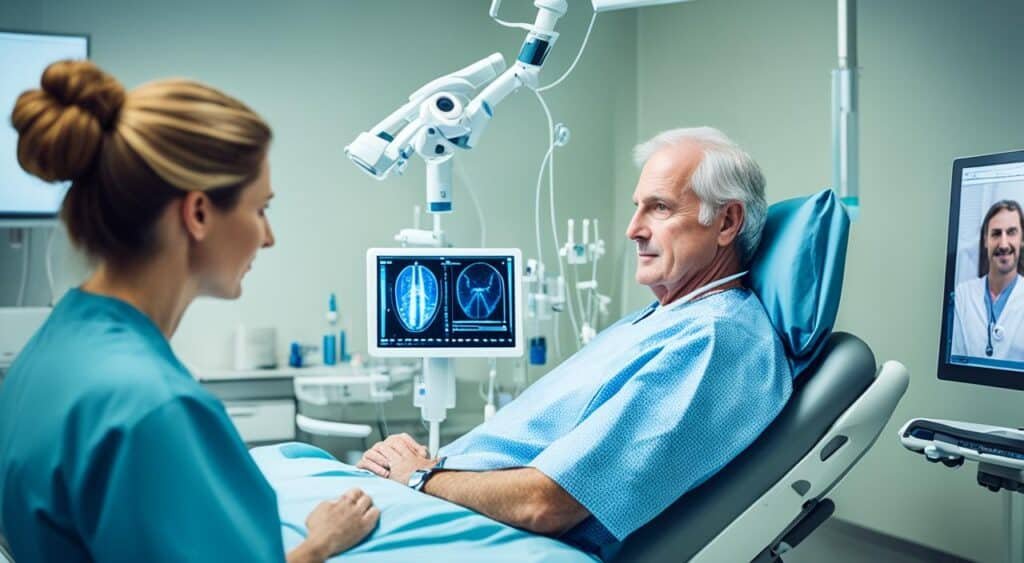
Telemedicine is growing in importance in healthcare. It helps improve patient care and access to services. It is widely used in primary care for remote consultations and managing chronic diseases.
It’s been proven to help patients with conditions like heart failure and COPD. Telemedicine cuts down on hospital visits and improves how people follow their treatments. This leads to better lives for patients and lower healthcare costs.
Chronic Disease Management
For chronic diseases like heart failure and COPD, telemedicine is very effective. It allows for remote check-ins and consultations. Plus, it’s been shown to lower how often patients need to go to the hospital or the ER.
With telemedicine, patients can take better care of their health. They stick to treatment plans more, which improves their quality of life and saves money on healthcare.
Mental Health Support
In areas without enough mental health care, telemedicine is making a big difference. It’s very effective for diagnosing and treating conditions like depression and anxiety. This means people in rural or hard-to-reach areas can get help.
It’s not just for diagnosis. Telemedicine also offers ongoing support. This helps patients stay on track with their mental health care, improving their overall well-being.
Specialty Care Access
Telemedicine is also opening doors to specialty care for more people. It’s great for those in rural or underserved areas. They now have quicker access to specialists in fields like cardiology or dermatology.
This setup not only cuts waiting times but also helps patient outcomes. Additionally, it supports primary care doctors. Specialists can give advice from afar, making it easier to manage complex cases.
Medical Imaging Technology
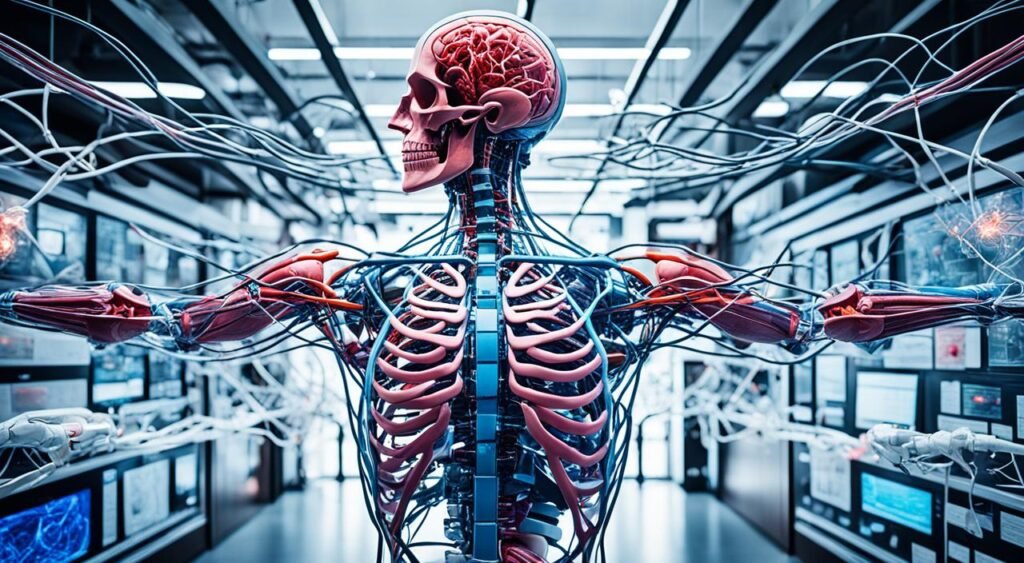
Medical imaging technology has greatly improved patient care. It includes CT scans, MRIs, and PET scans. These help in better diagnosing and tracking health conditions. Now, treatments like image-guided surgery are more focused.
Sharing and accessing medical images easily has changed how doctors work together. It allows for quicker and better care. Doctors can now look at images online, which makes decisions faster, improving patient care.
These advancements have made healthcare more precise and effective. Doctors can plan treatments better and keep a closer eye on how patients are doing. Consequently, patients are seeing better results and care in many medical areas.
Robotic Surgery

Robotic surgery is becoming more common in healthcare. It brings several benefits to patients. The da Vinci Surgical System, for example, lets surgeons work with more precision and control. This often means less pain, quicker healing, and better results for patients.
In surgeries that are complex or need small incisions, robots offer a big help. They provide better movement and clear pictures for the surgeon. Because of this, studies show that patients might have less blood loss, stay in the hospital for less time, and face fewer issues during recovery.
Robotic surgery doesn’t take the skill away from the surgeon. Instead, it makes their work even better. The tools keep getting better and are likely to improve healthcare a lot in the future. This means better care for all of us and more positive results from treatments.
Wearable Medical Devices
Devices like fitness trackers and smartwatches are now common in healthcare. They keep track of heart rate, activity levels, and sleep. This info helps doctors take care of patients from a distance.
Remote Monitoring
These gadgets are great for managing long-term health conditions. They also help catch health problems early. They give doctors up-to-date data on their patients, allowing for better, tailored care and improved health outcomes.
Data Analytics
Wearable medical devices create a lot of health data. This data gets used to understand and predict patient behavior and health. Analyzing this data helps doctors make better decisions about treatments. It also makes it easier to keep track of how well patients are doing.
When wearable devices connect with health records, they improve the quality of information. This means patients get more detailed and personalized care. It makes the entire healthcare system work better for everyone.
Hospital Technology

Hospital technology keeps evolving, and smart infusion pumps are a great example. These pumps work with special safety features like drug libraries. They can prevent mistakes in medicine and bad drug reactions. Plus, they talk to the patient’s health record, which makes everything smoother.
Using smart infusion pumps has shown it makes care better and safer. They help lessen mistakes in giving medicine. This makes them a key part of improving patient security in hospitals.
Automated Drug Dispensing Systems
Another cool tech in hospitals is automated drug dispensing systems. They use robots or computers to handle medicine. By doing this, they cut down on medicine mess-ups and make keeping track of supplies easier.
These systems connect with patient health records, too. This gives the medical team instant updates on medicine use. Studies show that this system makes less mistakes and helps patients more, proving its worth in making hospital care safer.
Patient Portals
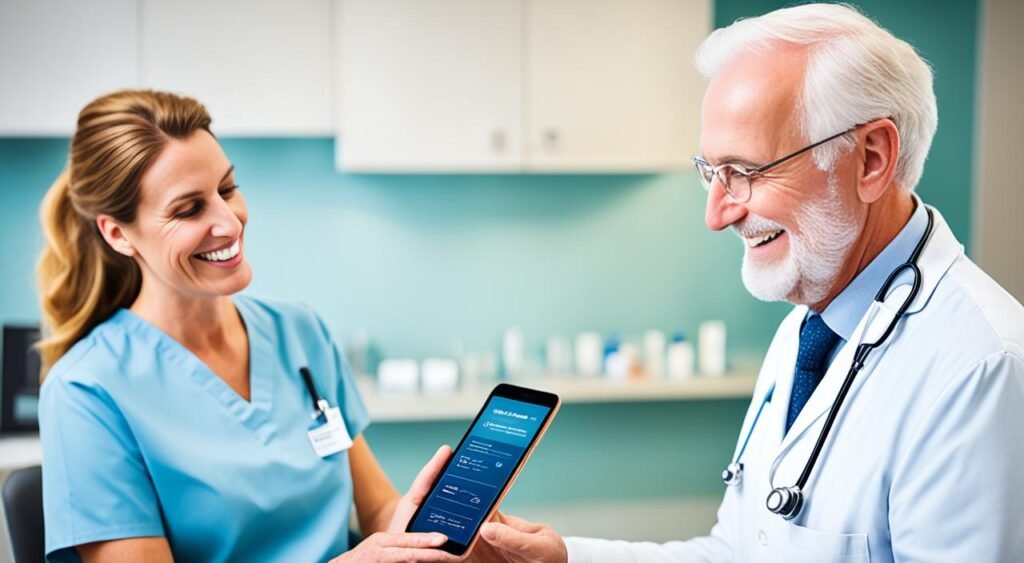
Patient portals are online tools that let patients see their health info and talk to their doctors. They can view records, tests, and their care plans. This helps patients be more active in their health and make decisions together with their healthcare team. Research has found that using these portals leads to taking medicines more regularly and getting check-ups more often. They also make it easier for patients and doctors to share details, which allows for care that is specific to each person.
Patient Engagement
Patient portals are key in getting people more interested in their health. They let patients look at their health details. This way, they can keep an eye on their health, track how they’re doing, and work closely with their doctor. Being more involved like this helps with taking medicines on time, managing long-term health issues, and keeping up with health check-ups. All of this leads to being healthier.
Data Access and Sharing
Along with making patients care more, portals also ensure health info is shared safely between patients and their healthcare team. Patients can check their health info, making them active in their health journey. Sharing this data helps everyone involved make better choices and work together smoothly. But, using patient portals needs to be safe. People’s privacy and the security of their health info must be top priority. Plus, these systems should work well with other health tech.
Health Information Exchange
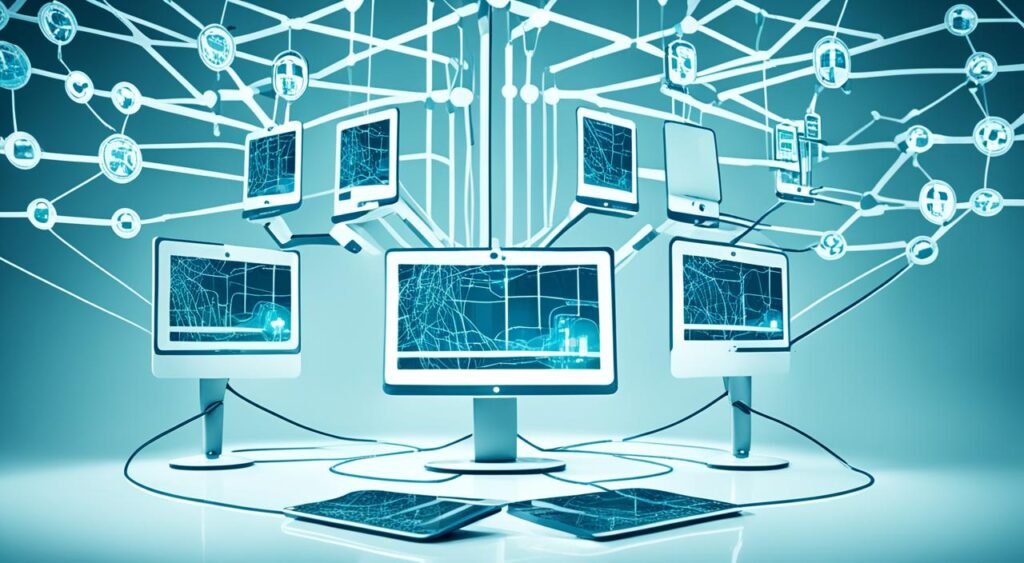
Health Information Exchange is sharing patient info between different healthcare places and people. It’s key for better patient care and safety. To give a full view of a patient’s health, it’s vital that systems can talk to each other.
Interoperability Challenges
Yet, making systems talk to each other is hard in healthcare. Many products in the market use unique codes. This makes it tough for systems to work together. Not being able to connect systems can cause a lot of problems. These include wrong patient info, lack of data, and not working together for better patient care. Tackling these issues is very important for the good use of tech in healthcare.
Emerging Technologies
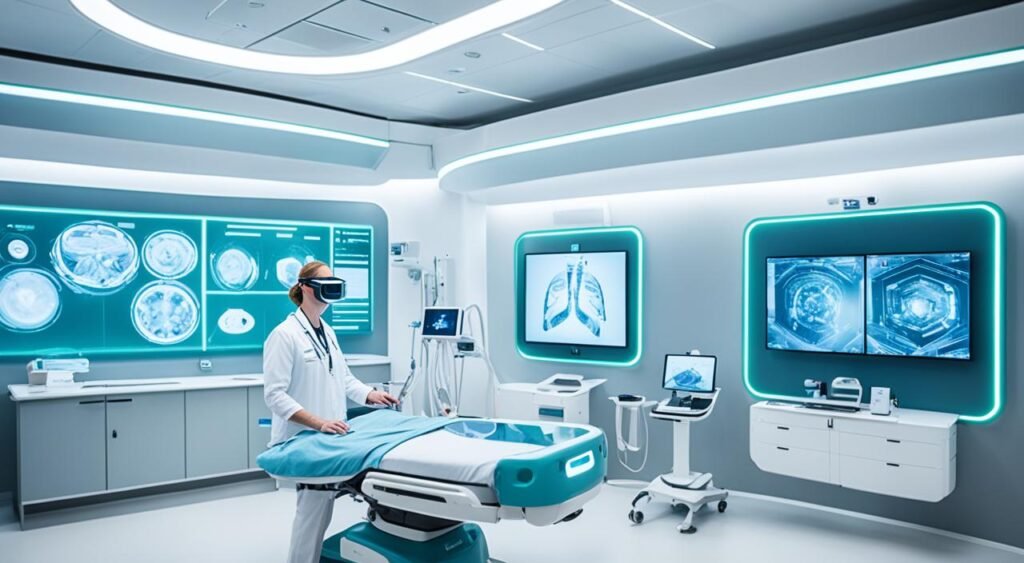
Artificial Intelligence
Artificial intelligence, or AI, is changing the game in healthcare. It analyzes lots of data to find patterns and make predictions. This helps doctors with disease diagnosis, planning treatments, and keeping an eye on patients. For instance, AI can look at medical images and pin down problems. It can also estimate the chance of bad events based on patient info. As AI gets better, patient care should be more accurate, efficient, and personalized. This can mean better health results and lower costs for healthcare.
Internet of Things
The Internet of Things (IoT) links devices and sensors together to share and make sense of data. In healthcare, it means devices like wearables, smart medical tools, and systems for checking up on patients from afar. Joining these IoT devices gives doctors and nurses up-to-the-moment health data. It lets them watch over long-term conditions better and step in earlier. The IoT also helps hospitals run smoother. This includes keeping track of items and managing supplies better. The IoT is growing and will keep changing healthcare for the better, making patient care improve and healthcare operations smoother.
3D Printing
3D printing does more than make cool gadgets. In healthcare, it’s creating things such as custom prosthetics, implants, and medical tools. This tech adapts well for patients in particular need of these items. It also crafts models surgeons can use to practice and plan. This makes surgeries more precise and efficacious. As 3D printing moves forward, it will redefine how healthcare delivers custom care. It’ll also help patients better their health results.
Virtual Reality
Virtual reality (VR) is making waves in healthcare, too. It’s good for teaching, easing pain, and helping in recovery. For teaching surgery, for example, VR lets medical folks practice risky procedures without real risk. It’s also being leveraged to manage chronic pain and worry. By offering immersive escapes, it can cut down on the feeling of pain and fret. Then, in recovery, VR can boost mobility and function for people who’ve been hurt or are sick. As VR gets better, it’ll join AI and the IoT in playing a major role in better healthcare and health results.
Also read: Top 10 Surgical Hospitals For Precision In The World
Conclusion
Hospital technology is a key part of modern healthcare, making patient care better and safer. It includes tools like electronic health records and robotic surgery. These have changed how we provide care, making it more precise and leading to better outcomes for patients.
Yet, using these technologies can be hard. Health organizations need to think about many things, like how easy the tech is to use, whether it works with other systems, and keeping patient data safe. They must make sure they use new tech to truly help patients.
New technologies, such as artificial intelligence and the Internet of Things, are always developing. This means healthcare workers need to keep learning and adapting to these changes. Doing so lets them take full advantage of what these tools offer.
By using hospital technology well, health groups can change patient care in a big way. This could improve care for everyone and make our healthcare system work better. As things continue to change, using technology wisely is key to offering the best care and improving healthcare for all.
FAQs
What are the benefits of using technology in healthcare to improve patient care?
New technology opens up ways to make patients safer. It makes medical work more efficient and cost-effective. Yet, if tech is used badly, it can put more stress on healthcare workers. This might lead to more mistakes.
What resources have government agencies developed to help healthcare organizations integrate technology?
The AHRQ, CMS, and ONC offer guides like the SAFER series. These help healthcare groups use tech in smart ways.
How can clinical decision support (CDS) tools improve patient safety?
CDS tools give important info to doctors, patients, and others to boost healthcare. They’re great for cutting errors in ordering treatments. But, they must be easy to use and right on target to be effective.
What are the benefits of electronic health records (EHRs) in healthcare?
EHRs store and share health info better, making care safer and more personalized. They help with choosing right treatments and keeping track of tests and appointments. Plus, they make it easier for patients and doctors to talk about care.
How can telemedicine enhance patient care and access to services?
Telemedicine is handy for remote visits and managing long-term conditions. It’s been proven to boost care for chronic diseases. And it offers a way for those in isolated areas to find mental health help.
What are the benefits of advancements in medical imaging technology?
Better imaging tools help doctors see health issues more clearly. This leads to more precise treatments, like surgery guided by images. As a result, patients often get better care.
How can robotic surgery improve patient care?
The da Vinci and others boost how accurate and precise surgeries are. They lower pain, speed up healing, and lead to better results for patients.
What are the benefits of wearable medical devices in healthcare?
Wearable gadgets track your body’s stats and send them to doctors right away. This is key for managing long-term conditions and catching health problems early.
How can hospital technologies like smart infusion pumps and automated drug dispensing systems improve patient safety?
Special pumps and systems stop drug mix-ups and bad reactions. They work closely with digital health records to keep patients safe from these risks.
What is the role of patient portals in enhancing patient care?
Portals let patients check their health details and talk with their doctors. They play a big part in getting patients more involved in their own care. This leads to better choices and care that’s well-coordinated.
What are the challenges with health information exchange and interoperability?
Getting health systems to easily share and use data faces lots of hurdles. Without this, patients might not get the best care, and important health info could get lost.
How can emerging technologies like artificial intelligence, the Internet of Things, 3D printing, and virtual reality impact healthcare?
New tech can make healthcare more accurate, efficient, and tailored. AI and IoT, for instance, help with diagnosing diseases and managing them more effectively. This could cut down on healthcare expenses and help people get better care.
Source Links
- https://www.ncbi.nlm.nih.gov/pmc/articles/PMC5787626/
- https://www.acog.org/clinical/clinical-guidance/committee-opinion/articles/2015/01/patient-safety-and-health-information-technology
- https://psnet.ahrq.gov/perspective/technology-tool-improving-patient-safety





